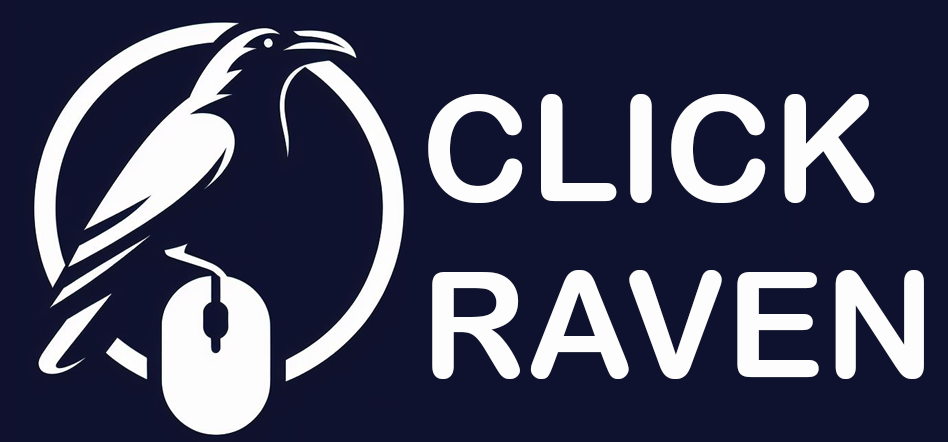Many companies heavily rely on data to make decisions. Key Performance Indicators (KPIs) are essential for businesses to track growth. Without KPIs, it’s tough to measure the success of campaigns. We’ve listed the top 10 SEO KPIs to help you monitor your website’s traffic growth.
What are SEO KPIs?
SEO Key Performance Indicators (KPIs) allow online marketers to measure a site’s SEO performance in search engines. They show you the success of your optimization strategy. In addition, KPIs provide a learning environment where you can continuously measure and optimize your growth.
Why are KPIs important for SEO?

Like other initiatives where you invest time, money, and resources, measuring your SEO KPIs can help improve your digital marketing efforts.
Apart from growth and providing a means to measure your progress, tracking SEO KPIs can:
- Alert you in case of any problems on your site and show the working strategies so you can apply them throughout the site. This way, you can track and measure your progress against set goals.
- Provide accountability by clearly pointing to the metrics, dimensions, and reports behind your business’s growth.
- It can help you track your return on investment (ROI) for better profits. With a better understanding of ROI, you can also estimate the payback period for your SEO business.
- Help you meet your audience’s needs efficiently.
- Make intelligent decisions that bring more profit.
Top 10 Important SEO KPIs to Track
1. Return on Investment (ROI)

Regardless of your current business challenges or the business model, you want your business to bring in returns.
Return on investment is the ratio between the profits you have made and the money you have spent. A high ROI means higher profits and a low ROI means lower profits in terms of the amount paid.
Measuring and tracking ROI from your SEO activities is critical because it is the best measure of success. Know your ROI target and measure your performance against it, understanding and reporting on how it is improving.
The fantastic thing is that several SEO tools, such as the Google Analytics account, simplify ROI calculation as you track your goals.
That said, it is necessary to remember that it can take time to see your ROI. It often takes 6 to 12 months, so try to set a reasonable ROI goal for your business.
2. Organic Visibility

Seeing that it takes time to see financial returns from SEO, another primary KPI you can measure and track to see your consistency in terms of growth is organic visibility.
Organic visibility is a metric that helps you quickly summarise your organic ranking performance. Typically, it provides the impressions of your content’s growth as the Google Search Console rates it. Based on this, you can identify the searches that increase organic traffic over time.
The good bit is that you can measure and report the visibility in two ways. First, you can showcase growth in impressions from Google Search Console. This is the ideal method to show continued growth, seeing that impressions show your website’s searches even if they were not indicated in clicks.
Another way to measure and report visibility is to look at keyword trends. Using organic research tools like Semrush and Ahrefs, you can track how your visibility changes for essential keywords.
3. Site Speed

Site speed is another important KPI you should track and measure for several reasons. First, the site’s speed affects its usability, as potential clients will likely abandon slow-loading sites.
The site’s page also affects its conversion rate. For instance, if clients want to purchase through the site and it takes long to load, they will likely leave.
Finally, page speed impacts SEO rankings. Slow-loading sites are likely to have low rankings in search engine results, which leads to fewer visits and views and fewer returns.
4. Organic click-through rate

Another crucial metric is the organic search click-through rate (CTR). The CTR is an SEO KPI that shows the percentage of people clicking on your link when searching for a specific term. It will also show how often the number of searchers converts into website visitors.
A high CTR shows that your site is relevant to the searcher’s query and that your search snippets are compelling. It also shows how well your SEO title and metadata attract searchers for a search term. The click-through rate highly depends on the rankings of your content on a search engine.
So, if your CTR is rising, it’s a great sign that clients enjoy and want to engage with content. It is also a sign that your SEO rankings are improving.
In addition, you can track your CTR using Google Analytics at the search engine query and page levels to have a more accurate scope of effectiveness on money spent.
5. Domain Authority

Domain authority is an important SEO KPI that you can use to gauge the strength of your site’s backlink profile. The backlink profile is the number and quality of the links pointing to your site from other websites.
This metric is one of the many KPIs that can be tracked to measure the health of a site’s SEO. The higher the number and quality of the backlinks, the higher your site’s domain authority.
However, it is essential to know that your domain authority is not just affiliated with the backlinks you buy but can also be based on your website’s age, traffic, and trustworthiness.
6. Bounce Rate

Bounce rate is the number of visitors or clients who leave your website after viewing one page or leave without interacting with it. For example, if a potential client clicks on your site and only views 1 page, it will boost your bounce rate and decrease your visibility. However, if they view more than the first page, it will reduce the bounce rate – a low bounce rate means customers are engaging with your content for longer, boosting your visibility.
Depending on your page’s topic, the average bounce rate can range between 20% and 80%. Any percentage above 80% shows that you need to optimize landing pages, create high-quality content, and improve your site’s page speeds to retain users for a longer time and reduce the bounce rate.
7. Conversion Rates For Sales and Leads

Conversion rates refer to the number of new leads you have obtained on your site compared to the number of visitors. This metric helps by showing the number of visitors converted to customers or leads on your site. The higher the number of visitors who complete a goal (e.g., buy something, fill in a form, contact you), the more profit you are likely to make in the long term.
Nevertheless, not every visitor will convert, so you can not expect to have a 100% conversion rate. Knowing your site’s average conversion rate will help you measure how your site’s landing pages and content are performing.
You can easily calculate your site’s conversion rate percentage by dividing the number of conversions by the number of visitors. The best way to measure and track your site’s conversion rate is by using Google Analytics.
Suppose you notice that your site has a lower conversion rate; try to increase it by optimizing your site for conversions, using effective marketing strategies to drive more traffic, and A/B testing different elements on your site to see what works best.
8. Customer Lifetime Value (CLV)

Customer lifetime value (CLV) is a metric that measures and tracks how much your business can plan to earn from an average customer throughout the relationship. In addition, it gauges the financial value each customer brings to your site over an extended period.
By measuring your client’s feedback at all key touchpoints and understanding the customer experience, you will know the key drivers of CLV.
This KPI helps you identify the SEO activities with the most significant positive financial impact. It also redirects SEO efforts toward customer-centered strategies that maximize the value your customer gets from different types of content on your site. It usually focuses on extending beyond current clients to incorporate potential clients for future growth.
9. Keyword Rankings

Keyword ranking is another valuable SEO KPI that can help you track your growth. Keywords are the words or phrases potential clients use when searching for something online.
Using the right keywords in your content will help increase your site’s traffic and improve your SEO efforts. Keyword optimization is fundamental for any good SEO strategy for ranking content, as it guarantees increased profits.
You can track your organic keyword rankings by using the best SEO tools. One such tool is the Google Search Console. This tool is fantastic because it allows marketers to monitor their website performance on Google without asking for money.
Depending on your site’s niche, you can focus on tracking high-volume, product, branded, and your most important keywords (popularly known as money keywords in SEO circles).
The high-volume keywords usually have a higher potential since they drive more traffic to your site. However, these phrases tend to be more competitive and, as a result, are difficult to rank for.
Product keywords will help you see how well your products or services rank in search engines. Branded keywords will help you see whether your brand is famous in the search engine result pages (SERPs).
Your “money keywords” will show you where you rank in the SERPs on the most essential phrases that make you money. These might not be product or service keywords; sometimes, they are just directly related to your product keywords.
10. Branded and non-branded traffic

Branded traffic is driven by users who have previously visited your site and are specifically searching for your brand using their keywords. For instance, they might search for your company name, product name, service name, or anything else from your brand.
On the other hand, non-branded traffic is driven by unfamiliar visitors who have never heard about your brand before. These users search with keywords that do not directly relate to your company or brand, but they may end up on your site.
Typically, the non-branded traffic you want to keep growing is the organic search traffic, which will eventually increase your branded traffic. You can evaluate which drives more traffic to your site by having branded and non-branded traffic.
Tips on choosing SEO metrics and KPIs to track

Several SEO KPIs can help you keep your SEO efforts focused and continually measure your marketing campaign performance. You only need to identify and pick the most critical metrics that align with your site.
However, it is tricky to know what to measure and what not. So here are a few tips to help you stay on the right track:
- Choose quantifiable KPIs that will align with your brand’s goals. These will mostly be sales or leads.
- Use leading indicators and industry statistics to show the direction the economy is headed. This will help you focus on the KPI metrics that move the needle.
- Avoid tracking things that can’t impact your business. If you can not change it, it is unnecessary to measure or track it.
- Create KPI time frames to see if you reach your set goals against set time.
- Find a direct connection between the SEO KPIs and your business goal since different niches or businesses require different KPIs.
- Choose an easily achievable SEO KPI while still finding the right balance between measuring and tracking everything.
Image credit: smartinsights.com

